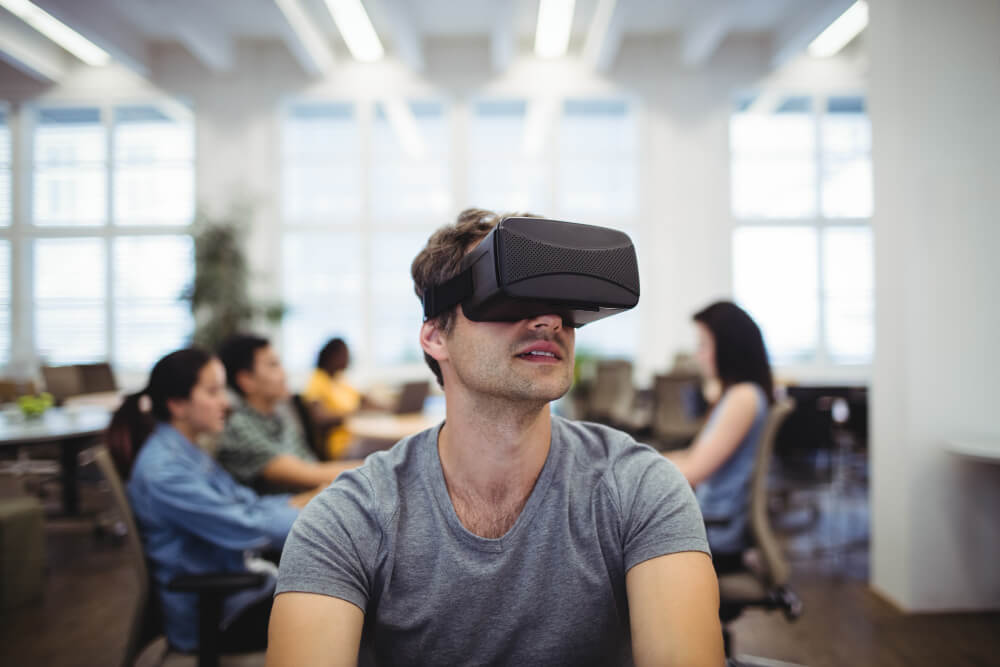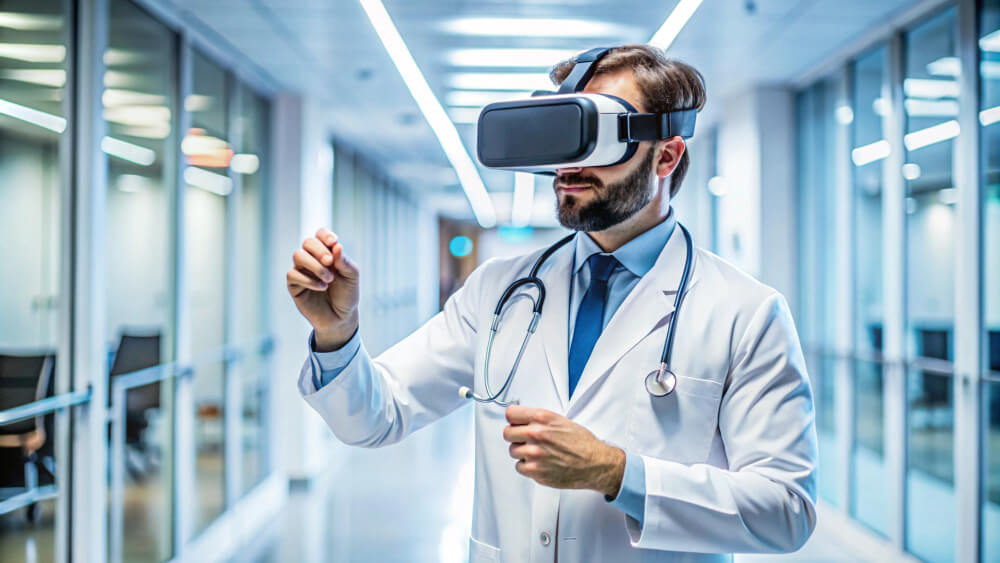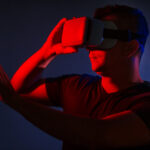What Is Phygital?
Table of Contents:
In only 40 years since the invention of the internet, our technology, and thus our lives, have advanced so far that we can now say that we live in a two-dimensional world. A world that combines the digital sphere with the physical one.
This leads to new phenomena, which we attempt to describe by coining new terms, like omnichannel customer experience or phygital. In this article, we pay attention to the second one and describe it in relation to the Metaverse. Thus, we invite you to read on if it is a topic that sparks your interest.
What Is Phygital?
Let us begin by defining what phygital means. The term comes from the fusion of the words “physical” and “digital,” accurately describing the phenomenon itself. Phygital means the blending of the physical and digital worlds aimed at drawing the best of these two to create the most convenient, intuitive, and pleasurable experience.
An example of the phygital model may be observed in the relationship between brands and Metaverse, where the former shape the latter to their advantage in order to acquire more customers for their physical products.
Phygital Experience
Phygital experience is often mistaken for omnichannel customer experience. It is so since both of these concepts share similarities at many levels. However, there are also aspects in which they differ; therefore, let us look at the idea of phygital customer experience in detail.
In building phygital customer experience, organizations focus on integrating their digital layer with the physical one. They do this to build a stronger relationship with their customers and to leverage the advantages of both worlds. Unlike omnichannel experience, phygital experience does not focus on making products accessible from any place nor creating consistency between all channels in both layers.
Unlock the future with Mazer: Your innovation partner.
Phygital Metaverse
Having described this phenomenon, let us now take a look at the relationship between phygital experience and the Metaverse itself. These two are inherently linked, which is proven by a number of examples.
- Virtual fitting rooms – The first example may be observed in the fashion industry, though its development was significantly accelerated by the COVID-19 pandemic. Virtual fitting rooms are the ideal definition of the phygital experience – they let customers try on their clothes in a digital space only to drive sales in the real world.
- Job interviews and calls – Another way this phygital experience is created is well-known to HR specialists. These utilize the Metaverse mainly for conducting job interviews or calls. Through VR, the whole experience is enhanced, and the communication is more real than during a video call, making it a preferred option for recruiters – although the job itself will take place in the physical world.
- VR/AR classes – Another possibility, one that is expected to grow, for creating a phygital experience is eliminating distractions in education. While many experiments still need to be done physically in class, most of the lectures may be conducted in virtual reality, free of visual distractions and noise. As a result, these phygital lessons are much more effective, letting students learn as much as possible.
The Role of Phygital in VR
Phygital VR refers to the use of virtual reality technologies to create immersive experiences that bridge the gap between the physical and digital worlds. For instance, in retail, brands are utilizing VR to allow customers to visualize products in their own space before making a purchase. This approach not only enhances customer engagement but also reduces return rates by ensuring that consumers are satisfied with their choices prior to buying.
Moreover, industries such as real estate are adopting phygital VR for virtual property tours. Potential buyers in virtual real estate tours can explore homes from the comfort of their own living rooms, experiencing a realistic sense of space and design without physically visiting each location. This application exemplifies how phygital VR can streamline processes and enhance decision-making for consumers.
Phygital AR Experiences
Similarly, phygital AR enhances real-world environments with digital overlays, providing users with interactive experiences that enrich their physical surroundings. For example, furniture retailers are employing AR applications that allow customers to visualize how a piece of furniture would look in their home before purchasing. By simply using a smartphone or AR glasses, users can place a 3D model of the furniture in their actual living space, making informed decisions based on visual context.
Additionally, AR is being utilized in educational settings to create interactive learning experiences. Students can engage with 3D models of historical artifacts or biological structures, deepening their understanding through hands-on exploration. This integration of AR into education exemplifies how phygital approaches can enhance learning outcomes by making abstract concepts tangible.
The Benefits of a Phygital Approach
Simply analyzing the examples presented above clearly shows that adopting the phygital approach might be quite beneficial – both for the users and the providers. But, to underline this even further, we have created a list of the most crucial advantages that phygital experience brings:
- It is more effective – Since the phygital approach focuses on the best elements from both worlds, it is naturally more effective for both the users/customers and the providers.
- It builds satisfaction – For customers, it is simple – they see no boundaries between the physical and digital worlds, so they are happy because they can merge these two layers seamlessly. For other users, for instance, students, higher satisfaction comes from better results. Nevertheless, phygital experience drives satisfaction, which is so important in the current customer-centric business world.
- It attracts attention – The phygital approach is quite new, but it’s also the inevitable future. Organizations that introduce it right now attract the attention of their target audience and prepare themselves for the future when the phygital approach will not be a strategy – it will be standard.
The Future of Phygital VR & AR Spaces
Looking ahead, businesses across various sectors—including retail, hospitality, education, and healthcare—are recognizing the importance of creating phygital spaces that enhance customer engagement. These spaces leverage dynamic signage, immersive AR experiences, and sustainable design principles to create environments that resonate with modern consumers35. For example, restaurants are beginning to implement personalized touches in their digital interactions by leaving messages on carryout bags or offering tailored promotions based on customer preferences.
As we approach 2025, it becomes increasingly clear that embracing phygital AR and VR solutions is not just an option, but a necessity for businesses aiming to thrive in a competitive landscape. By investing in innovative technologies and understanding consumer behavior deeply, companies can create memorable experiences that meet the evolving expectations of today’s discerning shoppers56.
Phygital: Conclusions
What is phygital? It is the seamless integration of the physical and digital worlds. It comes with numerous advantages for organizations and individuals. Phygital experience is already created by businesses that utilize, among others, the Metaverse for this purpose. What is the future of this approach? Most likely, it will become a standard.
You may also read: Metaverse Vs Multiverse: The Differences Explained
What is the definition of “Phygital”?
Phygital is a term derived from the fusion of “physical” and “digital,” signifying the seamless blending of the physical and digital worlds to create a convenient, intuitive, and pleasurable experience.
How does Phygital experience differ from omnichannel customer experience?
Phygital experience involves integrating the digital and physical layers to enhance the user’s experience, while omnichannel focuses on product accessibility and consistency across channels. They share similarities but differ in their core objectives.
What are the benefits of adopting a Phygital approach?
Adopting the Phygital approach offers several advantages. It is more effective, builds satisfaction for users, attracts attention from the target audience, and prepares organizations for the future where the Phygital approach becomes the standard.
Unlock the future with Mazer: Your innovation partner.

Author: Rafał Siejca
Rafal has over twenty years of corporate experience, including roles at Millennium Bank, Comarch, and leading software teams at PZU, one of Europe’s largest insurance companies. As one of Poland’s few true VR experts with a decade of experience, he ensures timely, high-quality project delivery as CEO and CTO.










